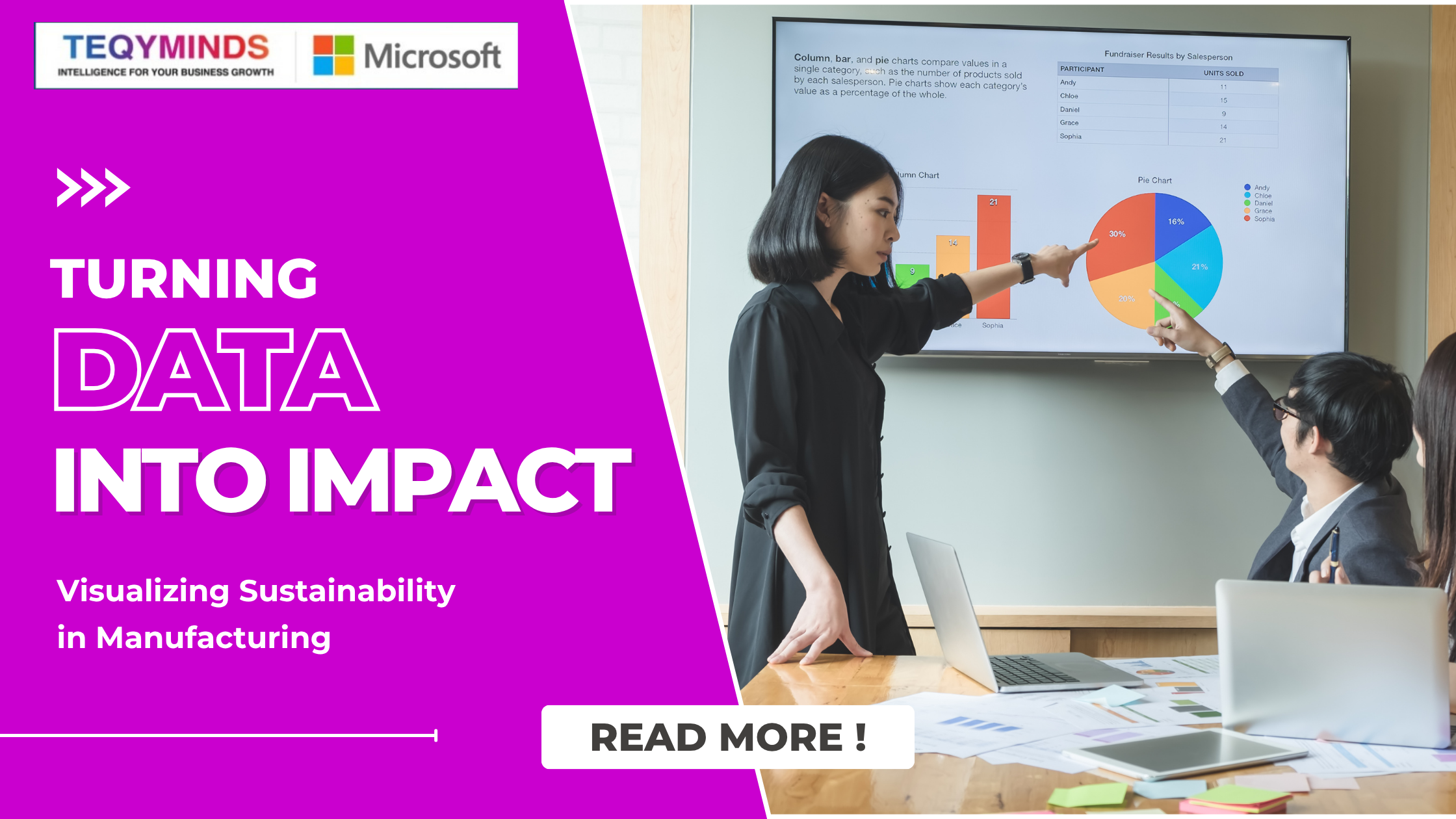In today’s manufacturing world, sustainability isn’t just a buzzword—it’s a business imperative. From energy consumption to waste reduction, manufacturers are under growing pressure to operate responsibly while staying competitive. But how do you turn sustainability goals into measurable progress?
The answer lies in data visualization—the art of transforming raw sustainability data into clear, actionable insights. When done correctly, it empowers teams to make smarter decisions, track progress in real time, and communicate their impact across the organization.
Let’s explore how manufacturers can harness the power of data visualization to embed sustainability into their daily operations—and turn good intentions into real-world results.
📊 Why Sustainability Needs to Be Visual
Sustainability data is often complex, scattered, and difficult to interpret. Think energy usage logs, emissions reports, water consumption metrics, and waste tracking spreadsheets. Without a clear way to visualize this information, it’s easy for critical insights to get lost in the noise.
Data visualization bridges that gap. It transforms numbers into stories—stories that help teams understand where they stand, where they’re headed, and what actions to take.
Key Benefits:
- Clarity: Dashboards make it easy to spot trends, outliers, and inefficiencies.
- Speed: Real-time visuals allow for faster decision-making.
- Engagement: Visuals are more intuitive and accessible than spreadsheets.
- Accountability: Teams can track progress against sustainability KPIs transparently.
🧠 From Data to Decisions: How Visualization Drives Action
Let’s say your factory’s energy dashboard shows a spike in electricity usage every Friday afternoon. Without visualization, this pattern might go unnoticed. But with a real-time chart, the anomaly is obvious—and you can investigate whether it’s due to equipment overuse, lighting, or HVAC inefficiencies.
This is the power of visualization: it turns passive data into proactive decisions.
Real-World Example:
A leading automotive manufacturer implemented real-time dashboards to monitor energy and scrap rates across its assembly lines. Within weeks, they identified inefficiencies that led to:
- 18% increase in production output
- 14% reduction in energy consumption
- 15% drop in scrap rates
🛠️ Tools That Make It Happen
You don’t need to be a data scientist to build powerful sustainability dashboards. Tools like Power BI, Tableau, and Microsoft Sustainability Manager make it easy to connect data sources and create interactive visuals.
Common Features:
- Drag-and-drop dashboard builders
- Real-time data refresh
- Integration with IoT sensors and ERP systems
- Custom alerts and KPI tracking
- Mobile access for on-the-go insights
For manufacturers already using Microsoft platforms, Power BI is especially powerful—it integrates seamlessly with Dynamics 365, Azure, and Excel.
🔄 Embedding Sustainability into Daily Workflows
Visualization isn’t just about reporting—it’s about operationalizing sustainability. That means embedding dashboards into the tools and routines your teams already use.
Practical Tips:
- Display dashboards on shop floor screens to keep teams aligned
- Integrate sustainability KPIs into shift handover reports
- Use mobile dashboards for field teams and maintenance crews
- Set up automated alerts for threshold breaches (e.g., excessive water use)
When sustainability becomes part of the daily rhythm, it stops being a side project and becomes a shared responsibility.
🚧 Challenges to Watch Out For
While the benefits are clear, there are a few hurdles to overcome:
- Data Silos: Sustainability data often lives in different systems. Integration is key.
- Lack of Standardization: Define clear KPIs and units of measurement.
- Change Management: Teams need training and buy-in to use dashboards effectively.
- Overcomplication: Keep visuals simple and focused—avoid dashboard overload.
🌟 The Future: Immersive and Predictive Dashboards
The next frontier in sustainability visualization includes:
- Augmented Reality (AR): Visualize energy flows or emissions in 3D on the factory floor
- Predictive Analytics: Forecast future sustainability performance using AI
- Digital Twins: Simulate the environmental impact of process changes before implementing them.
💬 Final Thoughts: From Insight to Impact
Sustainability isn’t just about collecting data—it’s about using it to drive change. By visualizing sustainability metrics in real-time, manufacturers can:
- Make smarter, faster decisions
- Engage teams at every level
- Prove their impact on customers, regulators, and investors.


Leave A Comment